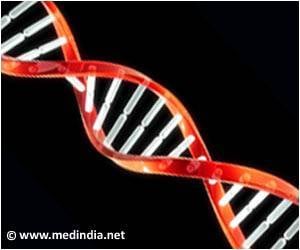Scientists are working on a new possible treatment for the fatal Huntington’s disease, which at present has no cure.
Scientists are working on a new possible treatment for the fatal Huntington’s disease, which at present has no cure.
In a paper published Sept. 20 in the Journal of Clinical Investigation, scientists at the University of Rochester Medical Center have shown how stem-cell therapy might someday be used to treat the disease. The team used gene therapy to guide the development of endogenous stem cells in the brains of mice affected by a form of Huntington’s. The mice that were treated lived significantly longer, were healthier, and had many more new, viable brain cells than their counterparts that did not receive the treatment.While it’s too early to predict whether such a treatment might work in people, it does offer a new approach in the fight against Huntington’s, says neurologist Steven Goldman, M.D., Ph.D., the lead author of the study. The defective gene that causes the disease has been known for more than a decade, but that knowledge hasn’t yet translated to better care for patients.
“There isn’t much out there right now for patients who suffer from this utterly devastating disease,” said Goldman, who is at the forefront developing new techniques to try to bring stem-cell therapy to the bedside of patients. “While the promise of stem cells is broadly discussed for many diseases, it’s actually conditions like Huntington’s – where a very specific type of brain cell in a particular region of the brain is vulnerable – that are most likely to benefit from stem-cell-based therapy.”
The lead authors of the latest paper are Abdellatif Benraiss, Ph.D., research assistant professor at the University, and former post-doctoral associate Sung-Rae Cho, Ph.D., now at Yonsei University in South Korea.
The latest results have their roots in research Goldman did more than 20 years ago as a graduate student at Rockefeller University. In basic neuroscience studies, Goldman was investigating how canaries learn new songs, and he found that every time a canary learns a new song, it creates new brain cells called neurons. His doctoral thesis in 1983 was the first report of neurogenesis – the production of new brain cells – in the adult brain, and opened the door to the possibility that the brain has a font of stem cells that could serve as the source for new cells.
The finding led to a career for Goldman, who has created ways to isolate stem cells. These techniques have allowed Goldman’s group to discover the molecular signals that help determine what specific types of cells they become, and re-create those signals to direct the cells’ development. Benraiss has worked closely with Goldman for more than 10 years on the Huntington’s project.
Advertisement
Huntington’s is an inherited disorder that affects about 30,000 people in the U.S. A defective gene results in the death of vital brain cells known as medium spiny neurons, resulting in involuntary movements, problems with coordination, cognitive difficulties, and depression and irritability. The disease usually strikes in young to mid adulthood, in a patient’s 30s or 40s; there is currently no way to slow the progression of the disease, which is fatal.
Advertisement
To do this work, Goldman’s team set up a one-two molecular punch as a recipe for generating new medium spiny neurons, to replace those that had become defective in mice with the disease. The team used a cold virus known as adenovirus to carry extra copies of two genes into a region of the mouse brain, called the ventricular wall, that is home to stem cells. This area happens to be very close to the area of the brain, known as the neostriatum, which is affected by Huntington’s disease.
The team put in extra copies of a gene called Noggin, which helps stop stem cells from becoming another type of cell in the brain, an astrocyte. They also put in extra copies of the gene for BDNF (brain-derived neurotrophic factor), which helps stem cells become neurons. Basically, stem cells were bathed in a brew that had extra Noggin and BDNF to direct their development into medium spiny neurons.
The results in mice, which had a severe form of Huntington’s disease, were dramatic. The mice had several thousand newly formed medium spiny neurons in the neostriatum, compared to no new neurons in mice that weren’t treated, and the new neurons formed connections like medium spiny neurons normally do. The mice lived about 17 percent longer and were healthier, more active and more coordinated significantly longer than the untreated mice.
The experiment was designed to test the idea that scientists could generate new medium spiny neurons in an organism where those neurons had already become sick. Now that the capability has been demonstrated, Goldman is working on ways to extend the duration of the improvement. Ultimately he hopes to assess this potential approach to treatment in patients.
“This offers a strategy to restore brain cells that have been lost due to disease. That could perhaps be coupled with other treatments currently under development,” said Goldman. Many of those treatments are being studied at the University, which is home to a Huntington’s disease Center of Excellence and is the base for the Huntington Study Group.
Source-Eurekalert
GAN/C








